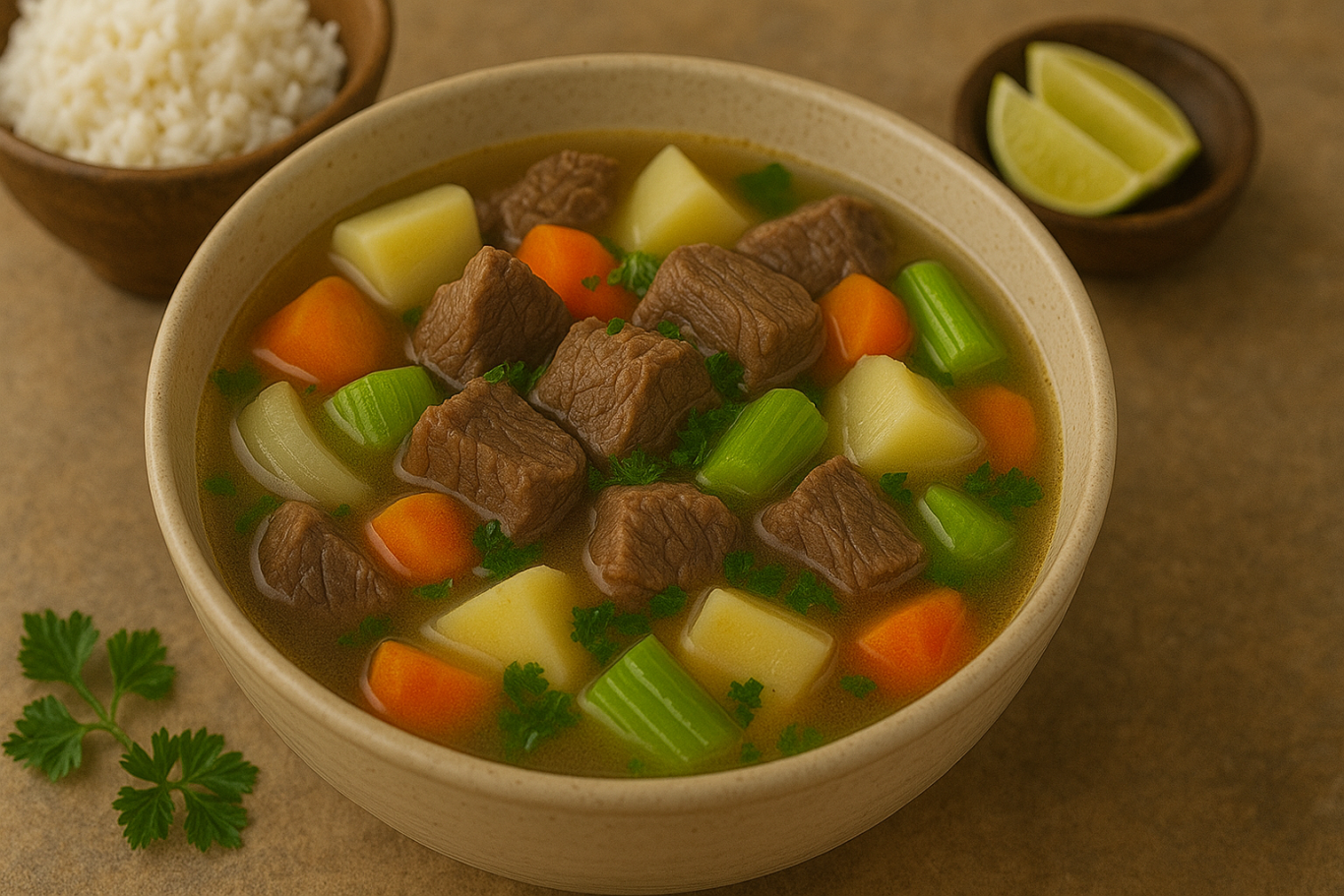5 Must-Try Eid al Adha Food Recipes for a Delicious Family Celebration
Eid al-Adha is always associated with moments of togetherness and the tradition of sharing sacrificial meat. One of the best ways to celebrate this special day is by serving delicious homemade dishes for your loved ones. That’s why many people look for Eid al Adha food recipes that are unique, tasty, and different from previous years.
This time, we’re sharing five Eid al Adha food recipes you can try at home. These recipes are not only practical and delicious, but they are also perfect for enjoying with the whole family. By using the sacrificial meat, you can explore a variety of Indonesian dishes that are rich in flavor and tradition.
1. Lamb Satay with Peanut Sauce

Lamb satay is one of the most popular Eid al Adha food recipes and is always highly anticipated. Tender chunks of lamb, paired with a savory peanut sauce, create a taste that’s truly unforgettable.
Ingredients:
- 500 grams lamb, cut into cubes
- 10 satay skewers
- 3 tablespoons sweet soy sauce
- 1 tablespoon cooking oil
Peanut Sauce:
- 100 grams fried peanuts, ground
- 2 cloves garlic
- 2 large red chilies
- 3 tablespoons tamarind water
- Salt and sugar to taste
How to make:
- Marinate the lamb with soy sauce and oil, let it sit for 30 minutes.
- Blend the peanut sauce ingredients, sauté until fragrant, then add tamarind water, salt, and sugar.
- Skewer the lamb and grill until cooked through.
- Serve with peanut sauce and fried shallots.
2. Special Beef Curry (Gulai Sapi)

Beef curry is always a top choice among Eid al Adha food recipes. The rich yellow broth and tender beef are simply irresistible.
Ingredients:
- 500 grams beef, cut as desired
- 500 ml coconut milk
- 1 stalk lemongrass
- 2 bay leaves
Blended spices:
- 6 shallots
- 4 garlic cloves
- 2 cm ginger, turmeric, galangal
- 5 candlenuts
- 5 red chilies
How to make:
- Sauté the blended spices, lemongrass, and bay leaves until fragrant.
- Add the beef, mix well.
- Pour in the coconut milk and simmer over low heat until the meat is tender and the broth thickens.
- Serve hot.
3. Sweet and Spicy Lamb Stew (Tongseng)

Tongseng lamb is a wonderful alternative among Eid al Adha food recipes, especially if you love a soupy dish that’s rich in flavor.
Ingredients:
- 400 grams lamb
- 1/2 small cabbage, roughly sliced
- 2 tomatoes
- 5 shallots, 3 garlic cloves
- 3 bird’s eye chilies (or to taste)
- 2 kaffir lime leaves, 1 stalk lemongrass
How to make:
- Sauté shallots, garlic, and chilies until fragrant.
- Add the lamb, stir until the color changes.
- Add kaffir lime leaves, lemongrass, and tomatoes.
- Add cabbage and enough water. Cook until the meat and cabbage are tender.
4. Fresh Beef Soup

Beef soup is a great Eid al Adha food recipe for children or elders because of its tender texture and refreshing broth.
Ingredients:
- 500 grams beef, cut into small pieces
- 2 carrots, sliced
- 2 potatoes, diced
- 1 stalk each of scallion and celery
- 1 tomato
How to make:
- Boil the beef until tender, remove the foam.
- Add carrots, potatoes, and other seasonings.
- Once everything is soft, add scallion, celery, and tomato.
- Serve the soup hot.
5. Purwakarta-style Maranggi Satay

If you want to try something different among Eid al Adha food recipes, maranggi satay is a great choice. The combination of beef and special seasonings makes this satay a family favorite.
Ingredients:
- 500 grams beef, cubed
- 2 tablespoons sweet soy sauce
- 1 tablespoon lime juice
- 1 tablespoon ground coriander
How to make:
- Marinate the beef with soy sauce, lime juice, and coriander for 1 hour.
- Skewer the beef and grill over charcoal until cooked.
- Serve with spicy sambal or pickles.
Tips for Cooking Tender Sacrificial Meat
To make the most out of your Eid al Adha food recipes, here are a few simple tips for cooking meat:
- Cut the meat against the grain so it becomes more tender when cooked.
- Use grated pineapple or wrap the meat in papaya leaves during marination to soften it.
- Cook on low heat to let the spices soak in thoroughly.
Making Eid al Adha More Meaningful and Educational

Ingin tahu detail program?
Eid al Adha is not just about enjoying a variety of Eid al Adha food recipes with your family. It is also the perfect time to teach values of togetherness, sharing, and creativity to your children. Get them involved in the kitchen, let them help prepare ingredients, and introduce them to traditional Indonesian cuisine.
Aside from cooking, family time like this can also be a great opportunity to introduce new skills to your children, such as learning to code. Coding encourages logical and creative thinking, which is highly valuable in today’s digital era.
If you want your child to grow and thrive in the digital world, feel free to try the free trial coding class at Timedoor Academy. Make your family moments even more exciting, meaningful, and full of inspiration!